How To Open Event Viewer In Windows 7
Always heard of an incredible Windows tool called the Issue Viewer? This is a feature that shows you detailed information about the processes that take place on your PC. And if y'all know the processes that occur on your PC and what they do, you tin pinpoint any bug your computer has. Every bit such, the Consequence Viewer tool is a handy style to locate the root of the problem.
This article will show you the 12 different ways to open the Result Viewer and some neat things you lot can practice with information technology once it's open.
Need a quick way to access various system tools similar the Outcome Viewer, Device Manager, Job Manager, and more than? Try using the Quick Admission Bill of fare.
Hither's how you tin open up the Event Viewer via the Quick Access Menu:
- Press Win + X or right-click the Windows icon to open the Quick Admission Menu.
- Select Event Viewer from the options.
2. Use the Run Control Dialog Box
The Run command dialog box makes it easy to access diverse apps on your Windows device. Here's how you can use this tool to open the Event Viewer:
- Press Win + R to open the Run command dialog box.
- Type eventvwr and press Enter to open the Upshot Viewer.
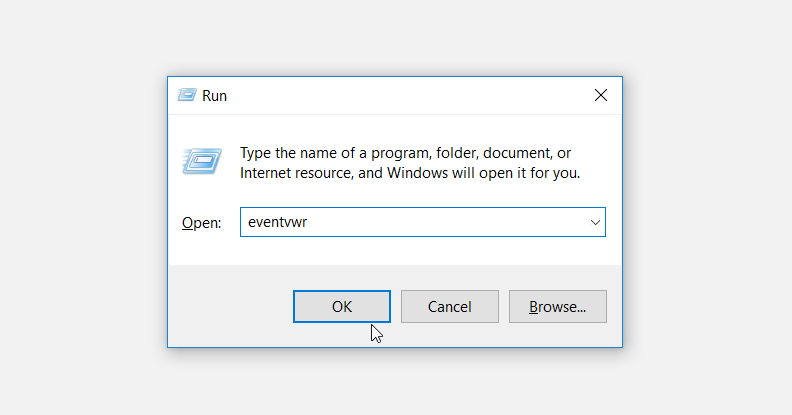
Y'all can ever rapidly find the apps on your Windows device by using the Start Card search bar. Here'south how yous tin open the Consequence Viewer via the Start Menu search bar:
- Click the Search bar icon on the taskbar or press Win + S.
- Type Result Viewer in the search box and select the All-time match.
The First Carte du jour contains a list of various Windows apps. And so, allow's run into how you tin access the Issue Viewer through this carte:
- Printing Win or click the Windows icon on the taskbar.
- Click All Programs and select Administrative Tools.
- Select Outcome Viewer from the menu options.
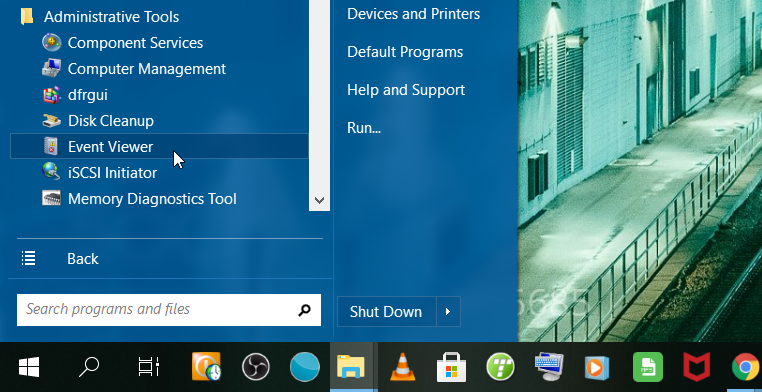
Always heard of the Windows Computer Management characteristic? This is a critical organisation tool that you can utilise to admission various programs like the Result Viewer, Device Manager, Task Scheduler, and more than.
Here'southward how y'all can open the Outcome Viewer using the Computer Management tool:
- Type Calculator Management on the Start Menu search bar and select the Best match.
- Click the drop-down menu next to Arrangement Tools and select Result Viewer from the options.
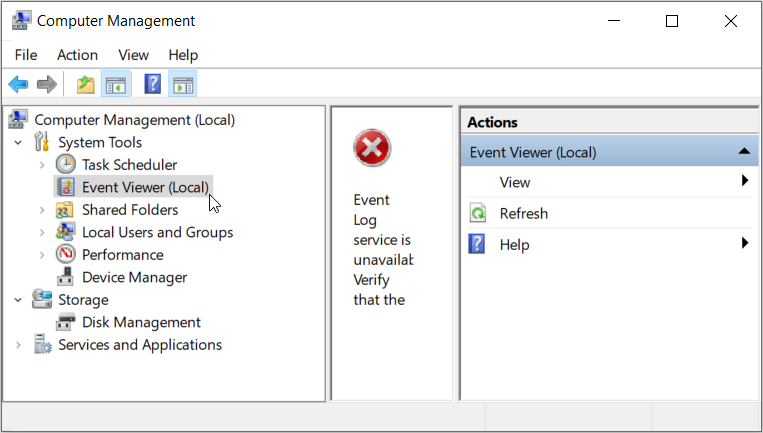
vi. Use File Explorer's Accost Bar
Yous can also access the Result Viewer using File Explorer's address bar. Here's how:
- Printing Win + Due east to open File Explorer.
- Type eventvwr in File Explorer'southward address bar to open the Effect Viewer.
7. Employ the Control Panel
The Control Panel is a reliable organization tool. Y'all can employ it to configure a few system settings or to troubleshoot issues. This tool can also come in handy when you desire to open up various Windows programs.
Here's how you can use the Control Console to open up the Event Viewer:
- Press Win + R to open the Run command dialog box.
- Type Command Panel and press Enter.
- Click the View past drop-down menu and select Big icons.
- Select Administrative Tools from the menu options.
- In the next window, scroll down and select Upshot Viewer.
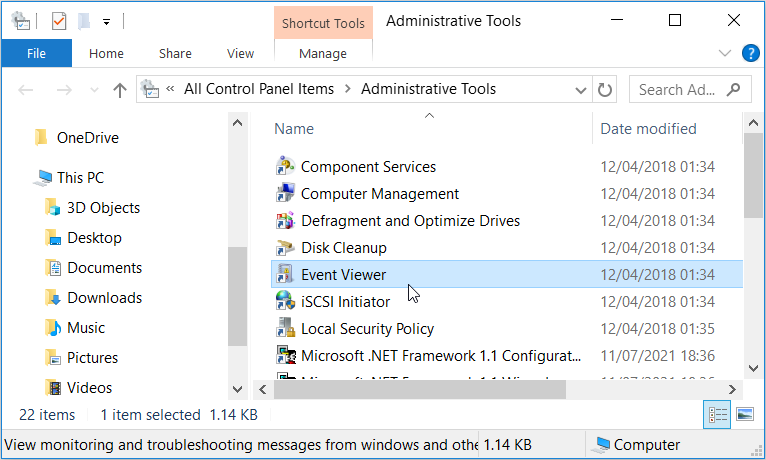
viii. Utilize the Command Prompt or Powershell
The Command Prompt and PowerShell can help when yous want to troubleshoot arrangement issues or open various apps. All yous demand to do is type in the correct commands, and you're expert to go.
Here'due south how you can employ the Control Prompt to open the Consequence Viewer:
- Press Win + R to open up the Run command dialog box.
- Blazon CMD and printing Ctrl + Shift + Enter to open an elevated Control Prompt.
- Type eventvwr and press Enter to open the Consequence Viewer.
On the other hand, hither's how you can use PowerShell to open the Issue Viewer:
- Printing Win + R to open the Run control dialog box.
- Blazon Powershell and press Ctrl + Shift + Enter to open up an elevated PowerShell window.
- Type eventvwr and printing Enter to open the Result Viewer.
ix. Use the Chore Manager
The Task Director is a handy tool that helps analyze arrangement performance. This tool tin can also assistance you easily access several apps on your Windows device.
Here's how yous can admission the Event Viewer via the Task Director:
- Press Ctrl + Shift + Esc to open up the Task Manager.
- Click the File tab on the top-left corner and select Run new task.
- Type eventvwr in the search box and press OK to open the Issue Viewer.
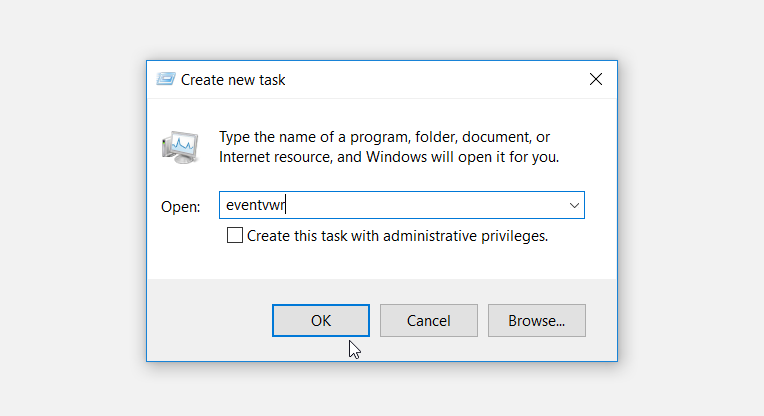
10. Use the Organization Settings
Did you know that the organization settings can aid you open up diverse apps on your Windows device? Here'southward how yous tin can open the Event Viewer using the arrangement settings:
- Press Win + I to open the system settings.
- Type Result Viewer in the search box and click the View upshot logs pick.
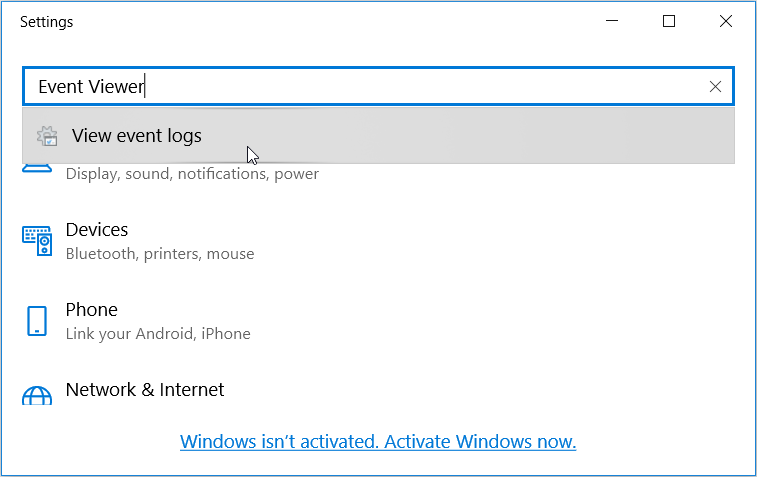
11. Surf the System32 Directory
The System32 directory has tonnes of executable (.exe) files that can help y'all admission diverse apps. Here's how y'all can open the Upshot Viewer from the System32 folder:
- Press Win + E to open File Explorer.
- Select This PC on the left-mitt side and then click Local Disk (C:) on the right-manus side.
- Navigate to Windows > System32.
- Curlicue down and select eventvwr to open the Upshot Viewer.
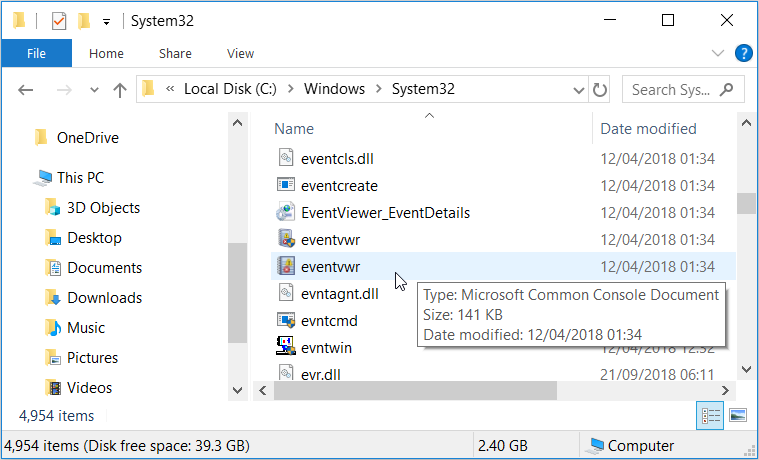
12. Create an Event Viewer Shortcut
Desktop shortcuts get in like shooting fish in a barrel to admission the apps on your Windows device. Then, let's take a expect at how you can create a desktop shortcut for the Event Viewer:
- Printing Win + D to admission the Desktop.
- Right-click on a blank space on the Desktop and navigate to New > Shortcut.
- Type %windir%\system32\eventvwr.msc in the location box and click Next to continue.
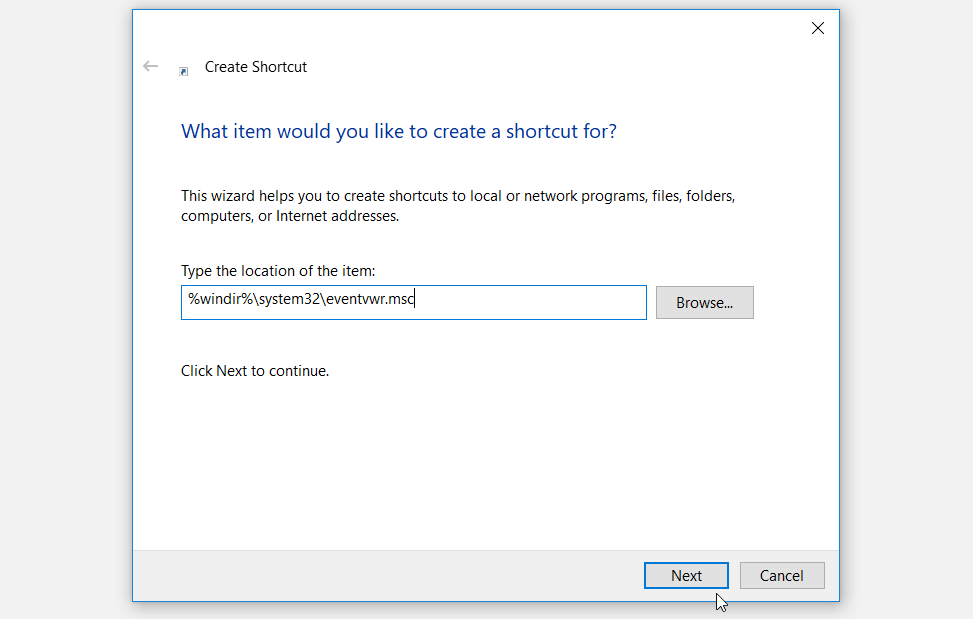
In the next window, type Consequence Viewer or choose any other suitable proper name for your shortcut and then click Stop.
Now you can pin this shortcut to the taskbar so that it's easily accessible. To practice this, correct-click on the shortcut and select Pin to taskbar.
How to Apply the Windows Event Viewer
Permit's now quickly take a look at how you tin can utilise the Event Viewer.
- Open the Event Viewer using any of the methods we've covered.
- Click whatever of the options on the left-hand side pane. For instance, click the drop-downwardly card adjacent to Windows Logs and click Arrangement from the options.
You should be able to meet the full number of events for the Organisation selection in the eye window. This will display the issue's date and fourth dimension, the issue ID, the event status, and more.
Clarify System Processes With the Event Viewer
The Event Viewer is quite helpful when you want to troubleshoot organisation issues on Windows. Whenever something unusual occurs, open this tool to properly analyze the situation. And if you want to chop-chop access the Consequence Viewer, effort the methods we've covered.
Source: https://www.makeuseof.com/windows-open-event-viewer/
Posted by: hallmorbigh.blogspot.com

0 Response to "How To Open Event Viewer In Windows 7"
Post a Comment